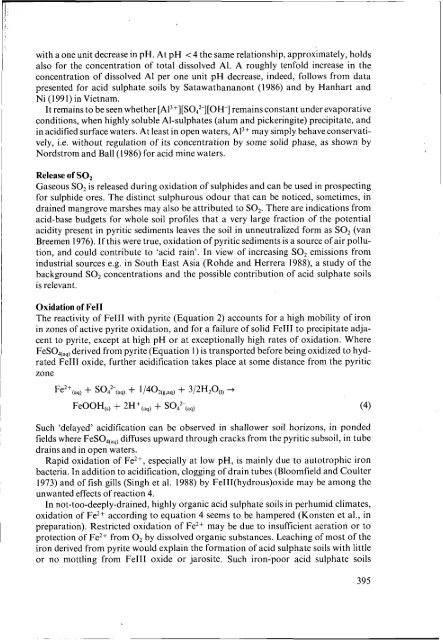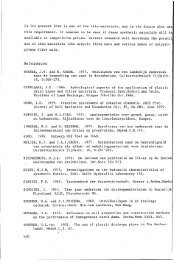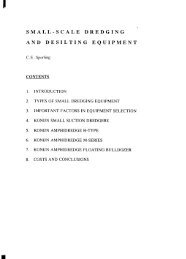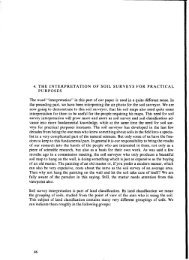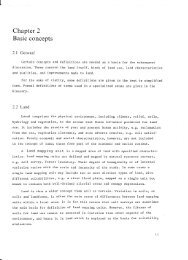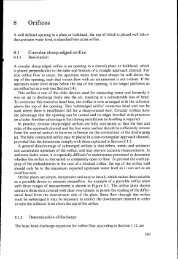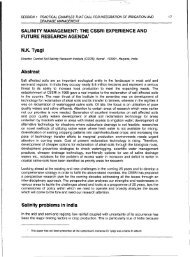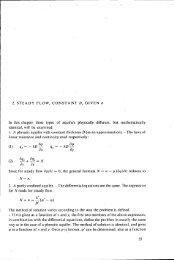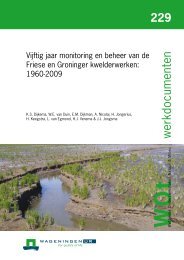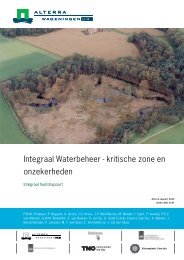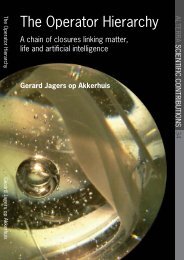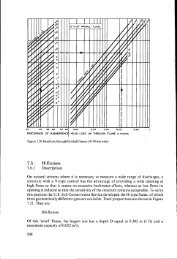Environmental aspects of acid sulphate soils - ROOT of content
Environmental aspects of acid sulphate soils - ROOT of content
Environmental aspects of acid sulphate soils - ROOT of content
You also want an ePaper? Increase the reach of your titles
YUMPU automatically turns print PDFs into web optimized ePapers that Google loves.
with a one unit decrease in pH. At pH < 4 the same relationship, approximately, holdsalso for the concentration <strong>of</strong> total dissolved Al. A roughly tenfold increase in theconcentration <strong>of</strong> dissolved AI per one unit pH decrease, indeed, follows from datapresented for <strong>acid</strong> <strong>sulphate</strong> <strong>soils</strong> by Satawathananont (1986) and by Hanhart andNi (1991) inVietnam.It remains to be seen whether [A13+][S0,2-][OH-] remains constant under evaporativeconditions, when highly soluble Al-<strong>sulphate</strong>s (alum and pickeringite) precipitate, andin <strong>acid</strong>ified surface waters. At least in open waters, Al3+ may simply behave conservatively,i.e. without regulation <strong>of</strong> its concentration by some solid phase, as shown byNordstrom and Ball (1986) for <strong>acid</strong> mine waters.Release <strong>of</strong> SO2Gaseous SO, is released during oxidation <strong>of</strong> sulphides and can be used in prospectingfor sulphide ores. The distinct sulphurous odour that can be noticed, sometimes, indrained mangrove marshes may also be attributed to SOz. There are indications from<strong>acid</strong>-base budgets for whole soil pr<strong>of</strong>iles that a very large fraction <strong>of</strong> the potential<strong>acid</strong>ity present in pyritic sediments leaves the soil in unneutralized form as SO, (vanBreemen 1976). If this were true, oxidation <strong>of</strong> pyritic sediments is a source <strong>of</strong> air pollution,and could contribute to ‘<strong>acid</strong> rain’. In view <strong>of</strong> increasing SO, emissions fromindustrial sources e.g. in South East Asia (Rohde and Herrera 1988), a study <strong>of</strong> thebackground SO, concentrations and the possible contribution <strong>of</strong> <strong>acid</strong> <strong>sulphate</strong> <strong>soils</strong>is relevant.Oxidation <strong>of</strong> Fe11The reactivity <strong>of</strong> Fe111 with pyrite (Equation 2) accounts for a high mobility <strong>of</strong> ironin zones <strong>of</strong> active pyrite oxidation, and for a failure <strong>of</strong> solid Fe111 to precipitate adjacentto pyrite, except at high pH or at exceptionally high rates <strong>of</strong> oxidation. WhereFeSO,,,, derived from pyrite (Equation 1) is transported before being oxidized to hydratedFe111 oxide, further <strong>acid</strong>ification takes place at some distance from the pyriticzoneSuch ‘delayed’ <strong>acid</strong>ification can be observed in shallower soil horizons, in pondedfields where FeSO,,,,, diffuses upward through cracks from the pyritic subsoil, in tubedrains and in open waters.Rapid oxidation <strong>of</strong> Fe2+, especially at low pH, is mainly due to autotrophic ironbacteria. In addition to <strong>acid</strong>ification, clogging <strong>of</strong> drain tubes (Bloomfield and Coulter1973) and <strong>of</strong> fish gills (Singh et al. 1988) by FeIII(hydrous)oxide may be among theunwanted effects <strong>of</strong> reaction 4.In not-too-deeply-drained, highly organic <strong>acid</strong> <strong>sulphate</strong> <strong>soils</strong> in perhumid climates,oxidation <strong>of</strong> Fe2+ according to equation 4 seems to be hampered (Konsten et al., inpreparation). Restricted oxidation <strong>of</strong> Fe2+ may be due to insufficient aeration or toprotection <strong>of</strong> Fe2+ from O, by dissolved organic substances. Leaching <strong>of</strong> most <strong>of</strong> theiron derived from pyrite would explain the formation <strong>of</strong> <strong>acid</strong> <strong>sulphate</strong> <strong>soils</strong> with littleor no mottling from Fe111 oxide or jarosite. Such iron-poor <strong>acid</strong> <strong>sulphate</strong> <strong>soils</strong>395


